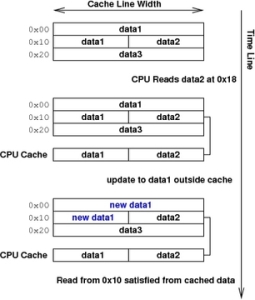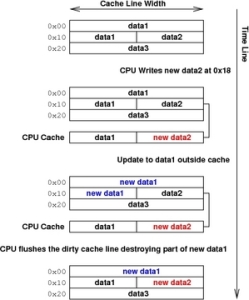bpf.lua位于bpf文件夹下,其代码如下(省去版权信息):
local ffi = require("ffi")
local C = ffi.C
local bpf = {}
bpf.cargs_extra = ""
---------------------------------------------------------------
bpf.cargs_add = function(s)
bpf.cargs_extra = s
end
---------------------------------------------------------------
ffi.cdef[[
int load_bpf_file(const char *path);
]]
local function load_bpf_file(path)
local ret = C.load_bpf_file(path)
if tonumber(ret) ~= 0 then
os.exit(-1)
end
end
local function run_llc_bpf(bc_file, bpfobj_file)
os.execute("llc-bpf -march=bpf -filetype=obj -o " ..
bpfobj_file .. " " .. bc_file)
end
---------------------------------------------------------------
local function split(s, delimiter)
local result = {};
for match in (s..delimiter):gmatch("(.-)"..delimiter) do
table.insert(result, match);
end
return result;
end
local basic_type_tbl = {
"char", "u8", "short", "u16", "int", "u32", "long", "long long", "u64"
}
local function get_real_type(typestr)
for _, v in pairs(basic_type_tbl) do
if v == typestr then
return v
end
end
return "cdata"
end
local function process_type(typestr0)
local typestr, size, size
typestr, size = string.match(typestr0, "(.*) %[(.*)%]")
if typestr ~= nil and size ~= nil then
sizestr = "sizeof("..typestr .. ") * "..size
typestr = typestr
if typestr == "char" then
typestr = "string"
end
else
typestr, size = string.match(typestr0, "(.*)%[(.*)%]")
if typestr ~= nil and size ~= nil then
sizestr = "sizeof("..typestr .. ") * "..size
typestr = typestr
if typestr == "char" then
typestr = "string"
end
else
sizestr = "sizeof("..typestr0..")"
typestr = get_real_type(typestr0)
end
end
return typestr, sizestr
end
local function gen_map_decl(map_type, key_type, val_type, entries, name)
local key_typestr, key_sizestr = process_type(key_type)
local val_typestr, val_sizestr = process_type(val_type)
if not entries then
entries = 1024;
end
local str = string.format("struct bpf_map_def SEC(\"maps\") %s = {\n" ..
"\t.name = \"%s\", \n" ..
"\t.key_type = \"%s\", \n" ..
"\t.val_type = \"%s\", \n" ..
"\t.type = BPF_MAP_TYPE_%s, \n" ..
"\t.key_size = %s, \n" ..
"\t.value_size = %s, \n" ..
"\t.max_entries = %d, \n};\n",
name, name, key_typestr, val_typestr, map_type, key_sizestr,
val_sizestr, entries)
io.write(str)
end
local function translate_cdef(s)
local n = split(s, '\n')
for _, line in pairs(n) do
local key_type, val_type, entries, name
local match = false
key_type, val_type, name = string.match(line,
"bpf_map_hash<([^,]*), ([^,]*)> (.*);")
if key_type and val_type and name then
gen_map_decl("HASH", key_type, val_type, nil, name)
match = true
end
key_type, val_type, entries, name = string.match(line,
"bpf_map_hash<([^,]*), ([^,]*), (%d+)> (.*);")
if key_type and val_type and entries and name then
gen_map_decl("HASH", key_type, val_type, entries, name)
match = true
end
key_type, val_type, name = string.match(line,
"bpf_map_array<([^,]*), ([^,]*)> (.*);")
if key_type and val_type and name then
gen_map_decl("ARRAY", key_type, val_type, nil, name)
match = true
end
key_type, val_type, entries, name = string.match(line,
"bpf_map_array<([^,]*), ([^,]*), (%d+)> (.*);")
if key_type and val_type and entries and name then
gen_map_decl("ARRAY", key_type, val_type, entries, name)
match = true
end
if not match then
io.write(line, "\n")
end
end
io.write("\nchar _license[] SEC(\"license\") = \"GPL\";\n")
io.write("\n#include <linux/version.h>\n")
io.write("\nu32 _version SEC(\"version\") = LINUX_VERSION_CODE;\n")
end
local function compile(srcfile, objfile)
local f = io.popen("uname -r", "r")
local release = f:read()
local linuxinc = string.format("/lib/modules/%s/build/", release)
local bpfinc = "bpf/libbpf"
local clang_cmd = string.format("clang -nostdinc -isystem /usr/lib/gcc/x86_64-linux-gnu/4.8/include -I%s -I%s/arch/x86/include -I%s/arch/x86/include/generated/uapi -I%s/arch/x86/include/generated -I%s/include -I%s/arch/x86/include/uapi -I%s/arch/x86/include/generated/uapi -I%s/include/uapi -I%s/include/generated/uapi -include %s/include/linux/kconfig.h %s -D__KERNEL__ -Wno-unused-value -Wno-pointer-sign -O2 -emit-llvm -x c -c %s -o %s", bpfinc, linuxinc, linuxinc, linuxinc, linuxinc, linuxinc, linuxinc, linuxinc, linuxinc, linuxinc, bpf.cargs_extra, srcfile, objfile)
os.execute(clang_cmd)
end
-- builtin cdef function
bpf.cdef = function(s)
local file
local srctmp = os.tmpname()
file = io.open(srctmp, "w")
io.output(file)
translate_cdef(s)
io.close(file)
io.output(io.stdout)
-- dump source
local f = io.open(srctmp, "rb")
local content = f:read("*all")
print(content)
f:close()
local bctmp = os.tmpname()
compile(srctmp, bctmp)
local bpftmp = os.tmpname()
run_llc_bpf(bctmp, bpftmp)
-- pass bpf table for bpf object loading, need clear it after load done.
_G["bpf"] = bpf
load_bpf_file(bpftmp)
os.remove(srctmp)
os.remove(bctmp)
os.remove(bpftmp)
end
---------------------------------------------------------------
bpf.print_map = function(map)
local map = map
for k in pairs(map) do
print(k, map[k])
end
end
---------------------------------------------------------------
bpf.copy_map = function(map)
local new = {}
local map = map
for k in pairs(map) do
new[k] = map[k]
end
return new
end
---------------------------------------------------------------
local function fill_line(n, max)
for i = 1, max do
if i < n then
io.write("*")
else
io.write(" ")
end
end
end
-- print histogram for bpf.var.map
-- Only support number key now.
bpf.print_hist_map = function(t)
local histo = {}
local stdSum, max = 0, 0
for k in pairs(t) do
if t[k] ~= 0 then
local k1 = math.pow(2, math.floor(math.log(k, 2)))
if histo[k1] == nil then histo[k1] = 0 end
histo[k1] = histo[k1] + t[k]
stdSum = stdSum + t[k]
if k1 > max then max = k1 end
end
end
print(" value ------------- Distribution ------------- count")
local k = 0
while k <= max do
local v = histo[k]
if v == nil then v = 0 end
io.write(string.format("%13d |", k))
fill_line(v * 40 / stdSum, 40)
io.write(string.format("| %d", v))
print()
if k == 0 then k = 1 else k = k * 2 end
end
end
return bpf
(1)
local ffi = require("ffi")
local C = ffi.C
local bpf = {}
bpf.cargs_extra = ""
以上代码导入ffi模块,并且定义bpf这个table。bpf table有一个cargs_extra的key,所对应的值是一个空字符串。

